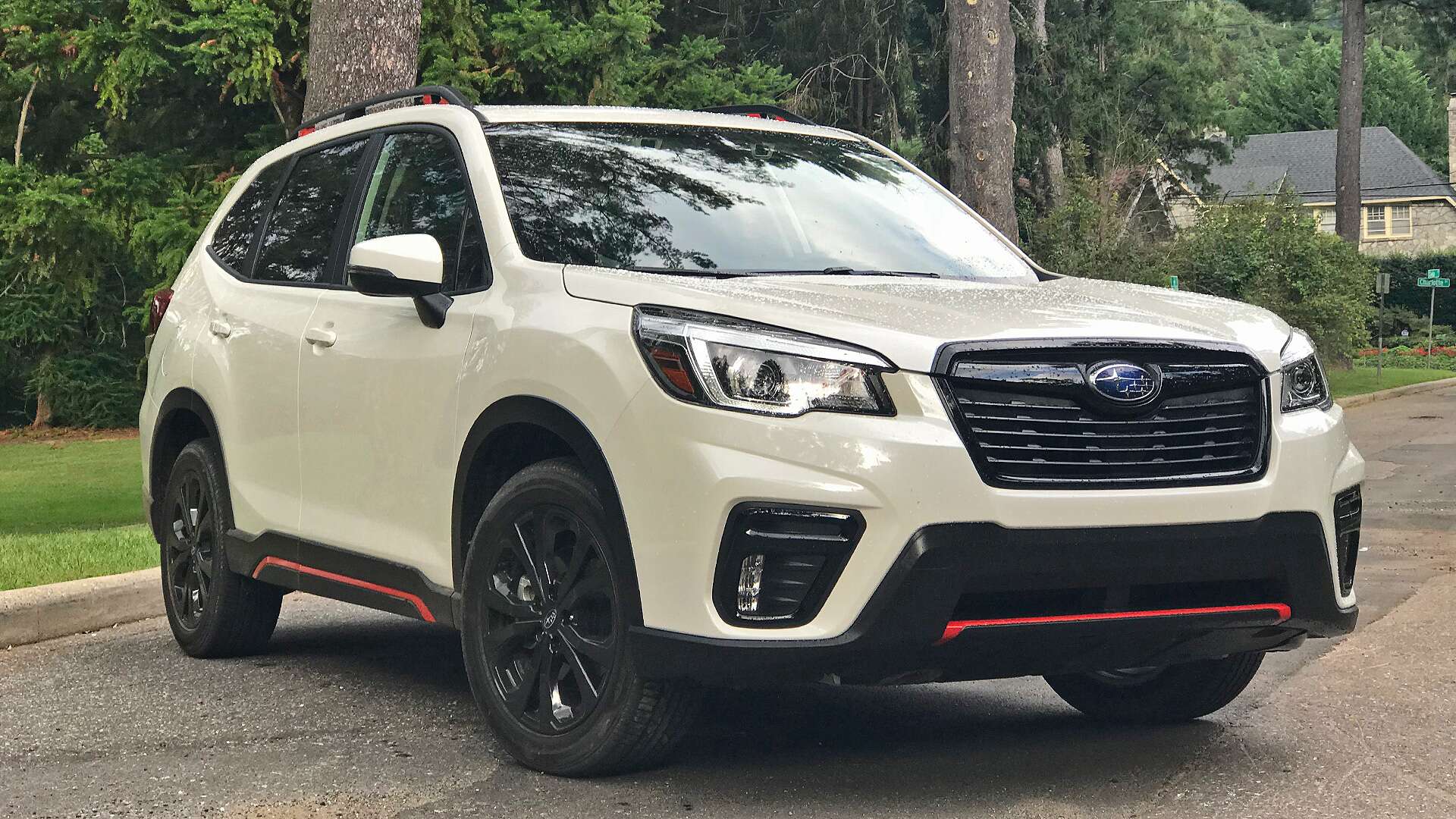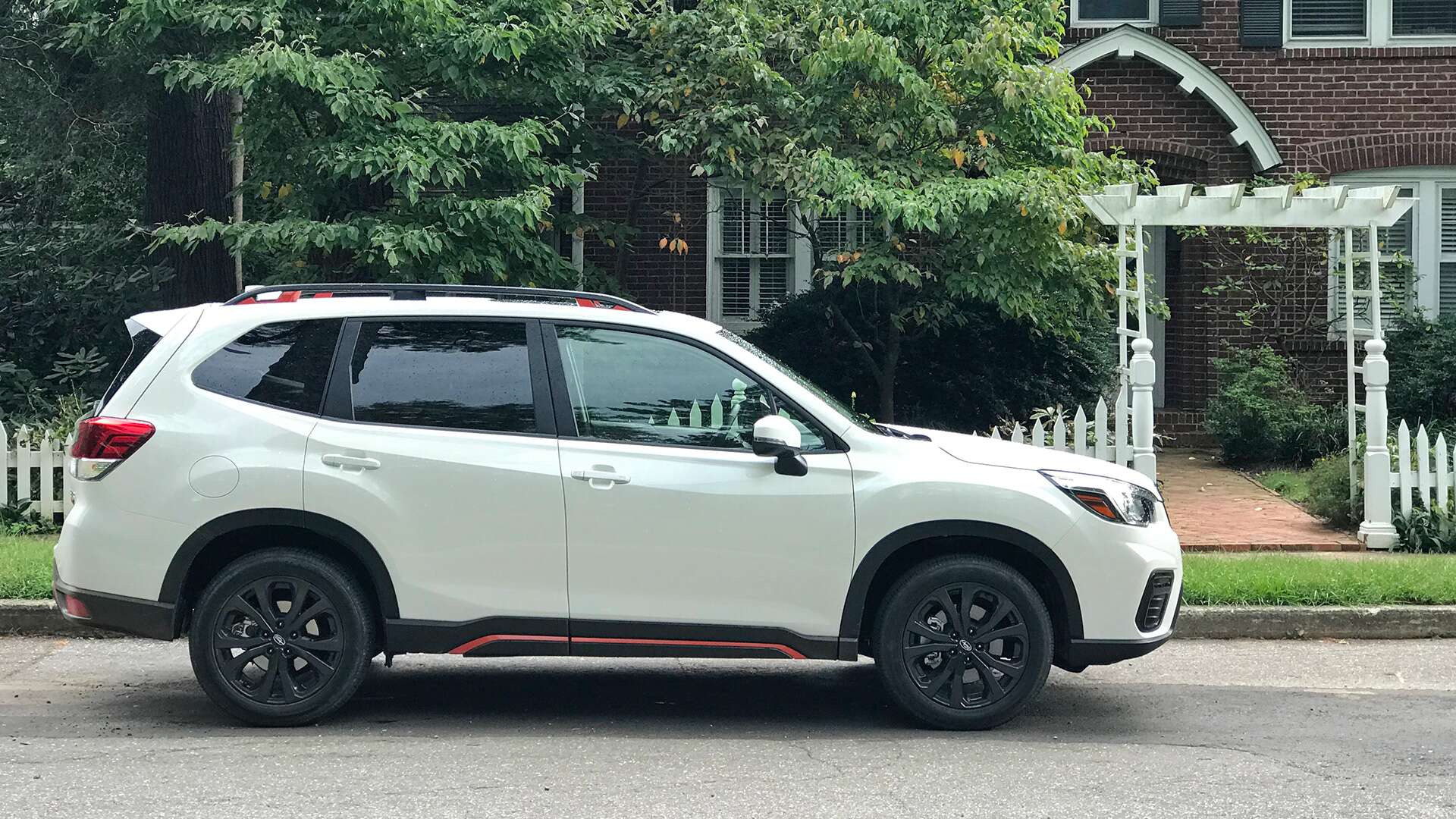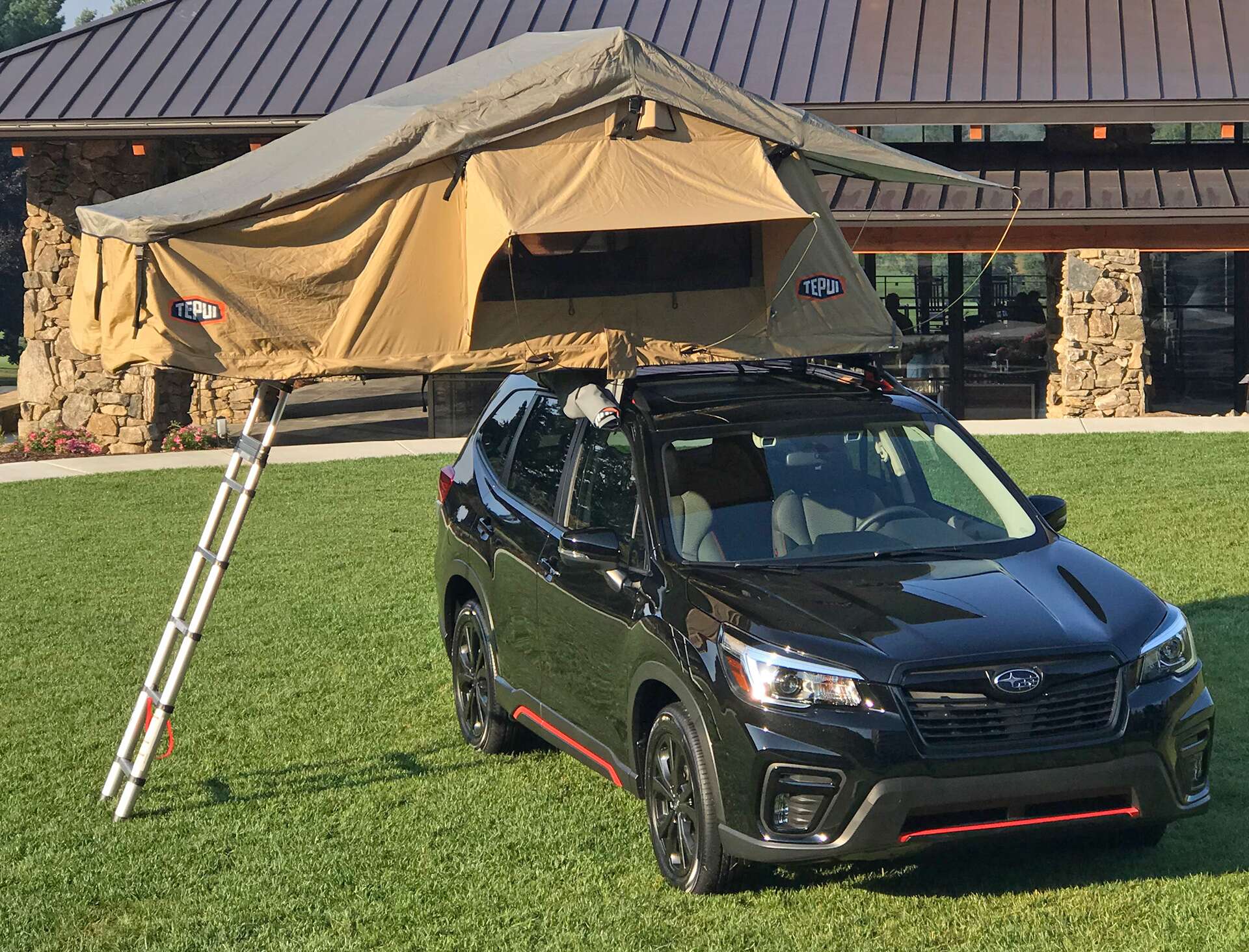The 2019 Subaru Forester, By the Numbers:
Trim Level Tested: Sport
Base Price (Price as Tested): $25,270 ($31,815)
Powertrain: 2.5-liter horizontally-opposed four-cylinder, 182 horsepower, 176 pound-feet of torque; continuously-variable automatic transmission; all-wheel-drive
Fuel Economy: 26 city, 33 highway
0-60 MPH: Call it the mid-to-high eight-second range
Towing Capacity: 1,500 pounds
Wonderful, largely Subaru-specific feature: Heated seats can be optioned with cloth upholstery. Toasty.
Like it or not—and plenty of people in the automotive enthusiast world don’t—the 2019 Subaru Forester represents the face of the average modern-day automobile. The sedan’s era as the dominant family car is done, outcompeted out by bigger, stronger, more capable sport-utility vehicles of all shapes and sizes. And few companies have been better suited to capitalize on this trend than Subaru. While it’s impossible to climb inside the collective consciousness of a corporation, it seems pretty safe to assume that Subaru as a whole has a pretty good grasp on what Americans want.
After all, sales in the United States have been climbing for 81 straight months, as the masses between the company’s traditional, patchouli-scented strongholds of the Northeast and Northwest have realized the benefits of all-wheel-drive traction and elevated ride heights. It’s that sort of confidence- and profit-bolstering sales ascent that helped pave the way for the carmaker’s first three-row crossover earlier this year—perhaps appropriately, named Ascent—and now it’s helping the company shepherd an all-new version of the Forester into showrooms.
But that confidence lies in the current, clearly-successful formula—which means obvious changes for the likes of the company’s second-selling model are hard to spot. Instead, the 2019 Forester scrubs away the bad of its predecessor and builds upon the good. Riding on the newly-ubiquitous Subaru Global Platform, the fresh model packs more forms of high-strength steel, making it able to take 1.4 times the frontal impact force of its predecessor; every version comes with seven airbags, enhanced adaptive seatbelts, and the full suite of EyeSight active safety technology that includes lane departure prevention, adaptive cruise control, and automatic emergency braking to protect (and reassure) families; and the whole lineup benefits from a fresh-faced look that’s evocative of the rest of the lineup while still clearly tied to Foresters past. From tip to tail, the new Subie is designed to appeal, not offend.
Unless, of course, you’re one of the handful of people who loved the turbocharged XT version, or preferred your boxer-engined crossover with a row-your-own gearbox. Both those options are dead as Elvis for the fifth-generation car, sacrificed on the altar of simplicity. Only around 5 percent of buyers opted for the boosted Forester, Subaru told us, and a mere 3 percent chose the stick shift; given such numbers, devoting the R&D resources to new versions of them must have seemed foolhardy.
As a result, every 2019 Forester sold in the U.S. of A. will come packing the same propulsion system: a 2.5-liter naturally-aspirated boxer four-cylinder churning out 182 horsepower and 176 pound-feet of torque, running to the all-wheel-drive system by way of a continuously-variable transmission. If those words elicit any sort of emotional reaction—and let’s face it, if they’re gonna stir up any feelings, they’re probably gonna be negative ones—you’re not the intended audience. Most buyers will be more preoccupied with the impressive fuel economy stats the engine’s tuned to deliver; after all, there aren’t many five-passenger SUVs that turn in 26 miles per gallon in the city and 33 mpg on the highway—on regular gas, no less. (In case you’re interested in testing your bladder’s elasticity, that translates into more than 500 miles of open-road driving range before the low fuel light kicks on.)
Subaru seems to throw a bone to the enthusiast crowd in the form of the 2019 Forester’s new Sport trim level, seen in the pictures here from The Drive’s first stint behind the wheel outside Asheville, North Carolina—but like many vehicles with that adjective appended to their name, “Sport” does not mean what you think it means. (Think of it as the “sport” from “sport-utility vehicle,” not the one from “sport sedan.”) The only bones thrown to those who enjoy driving are the Sport # throttle map, which delivers more gusto earlier in the pedal’s travel, and a set of paddle shifters for toggling through the counterfeit cogs; otherwise, the trim’s tweaks are relegated largely to cosmetic changes and minor convenience features: LED fog lamps and interior lighting, keyless access, and black-and-orange trim bits sure to inspire strong opinions on both sides of the argument.
On the road, the Forester’s performance never seems inadequate for what it is. The CVT is programmed to slur between ideal ratios at lower throttle inputs; goose it, and it transforms into a simulacrum of a seven-speed automatic, complete with faux gear shifts to keep it in the heat of the power band. The engine is adequate for the basic task of moving the car around at ordinary speed, but prying any performance out of it is a struggle; passing maneuvers require both a lead-footed stomp on the gas and the sort of planning usually reserved for invading Normandy.
More disconcerting for anyone who first came to know Subaru as the purveyors of bug-eyed rally cars is the new Forester’s handling. The 18-inch wheels and tires on the Sport feel sure-footed on both pavement and dirt alike—the latter proven during a short off-road course the carmaker set up for us to test the latest version of the X-Mode system, which has grown into a Land Rover-like adaptive setup offering different terrain modes and an off-road cruise control that holds the speed at wherever you last left off the gas in select models—thanks to features like active torque vectoring on all models and a revised steering rack that’s quicker than the outgoing version. But like the larger Ascent, there’s a surprising amount of body roll; the way the cabin bobs and flops around in tight corners means you constantly find yourself driving below not just the car’s limits, but occasionally the speed limit.
On the flip side, keep this Subie in its happy place—which is to say, drive it like Betty White instead of Steve McQueen—and it’ll reward you with a ride smooth as freshly-Zambonied ice. I have no hard-and-fast metrics to base this on, but my trusty butt-o-meter swears the 2019 Forester has a better ride than many high-end cars you can buy—a Cadillac ride at a Chevrolet price.
The interior also feels as though it offers the sort of space associated with the Wreath and Crest’s land yachts, in spite of the Forester’s tidy dimensions. (While it’s an inch wider and three-quarters of an inch longer than the fourth-gen model, the new version is still more compact than most of its competitors.) Much of that stems from the open, airy feeling that comes with the tall windows and the panoramic sunroof that’s standard on all but the base model. But it’s also a result of the Forester’s impressive packing, which I can personally verify serves up enough room for a quartet of six-foot-four people to fit inside. It also delivers 33 cubic feet of space with all seats up and 70.9 with the second row folded—all available through a squared-off hatch opening wide enough to fit a set of golf clubs perpendicularly. (The base model actually offers a tiny bit more space, due to some packaging eccentricities, but its stripper status means it’s worth spending the extra few grand to step up to the better-equipped Premium trim, which is expected to be the volume seller.)
Should you rank among the many Forester buyers who like camping, you don’t even need to worry about filling up any of that space with a place to sleep outdoors. While the roof rack can only accommodate up to 176 pounds when the car’s in motion, the engineers proved it can handle close to 700 when the car is parked—thus allowing the carmaker to official endorse the use of pop-up roof tents. And no matter which trim you opt for, expect to scramble over obstacles with relative ease; in addition to the standard AWD found on all Subies except the BRZ, each 2019 Forester towers the same 8.7 inches above the ground that the Outback and Crosstrek do, giving it greater ground clearance than most competing compact crossovers. (Say that five times fast.)
Much as it may pain gearheads to admit it, the new vehicle’s combination of traits will no doubt suit the average Forester buyer quite nicely. After all, this high-riding station wagon (let’s face it, that’s what this is) is perfect for the sort of folks who make up the purchase pool: mostly well-educated professionals who own dogs, love hiking, and need a dependable, safe car for their daily lives. Basically, the same people who’ve made up the majority of Forester buyers for the last two decades.
And for all its generational evolution (or lack thereof), perhaps that’s the most remarkable thing about the Subaru Forester: how well it’s grown into the zeitgeist. What was simply a tiny oddball SUV when it first launched in 1997 has become, in effect, the de facto generic passenger vehicle of 2018. It’s hasn’t needed to change all that much; the world changed around it. No wonder Subaru sells so many of the damn things.
Source: Read Full Article





